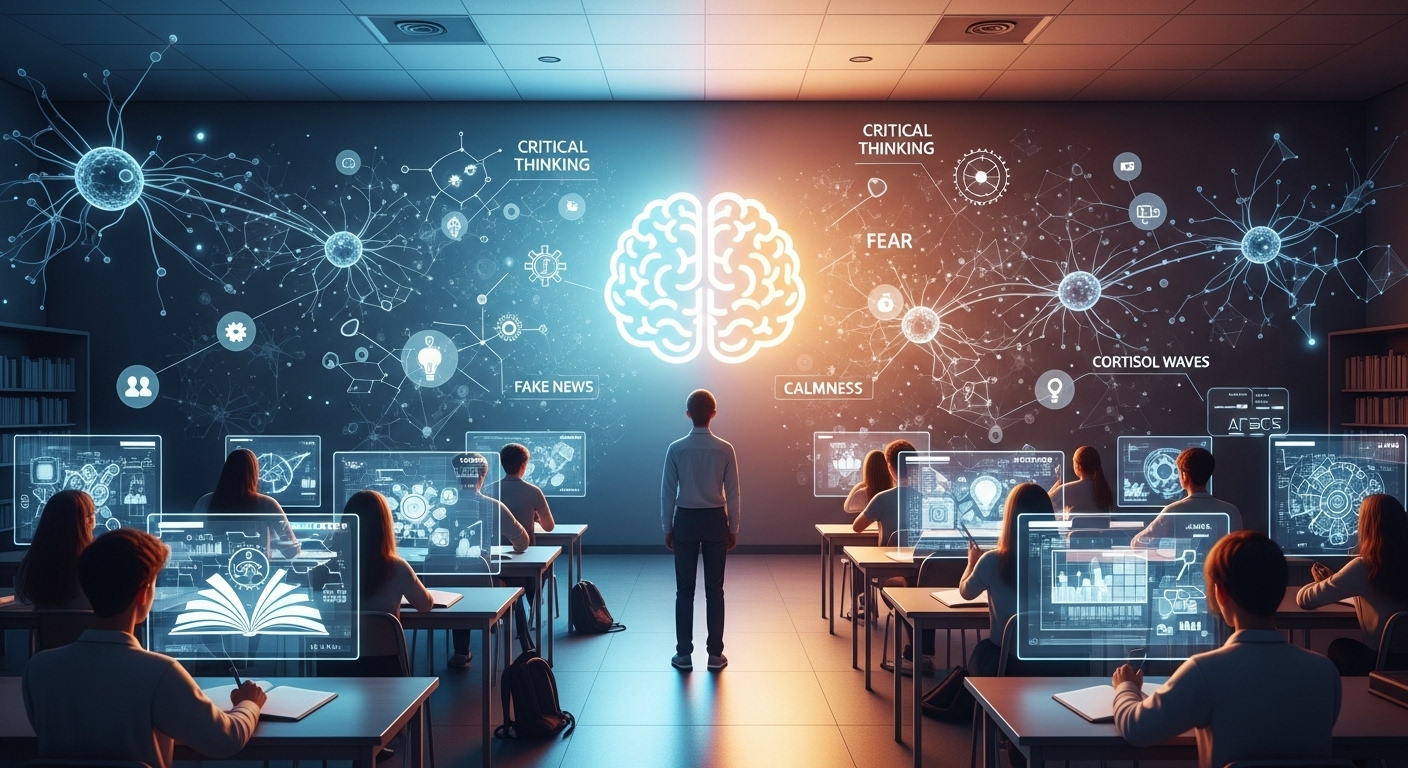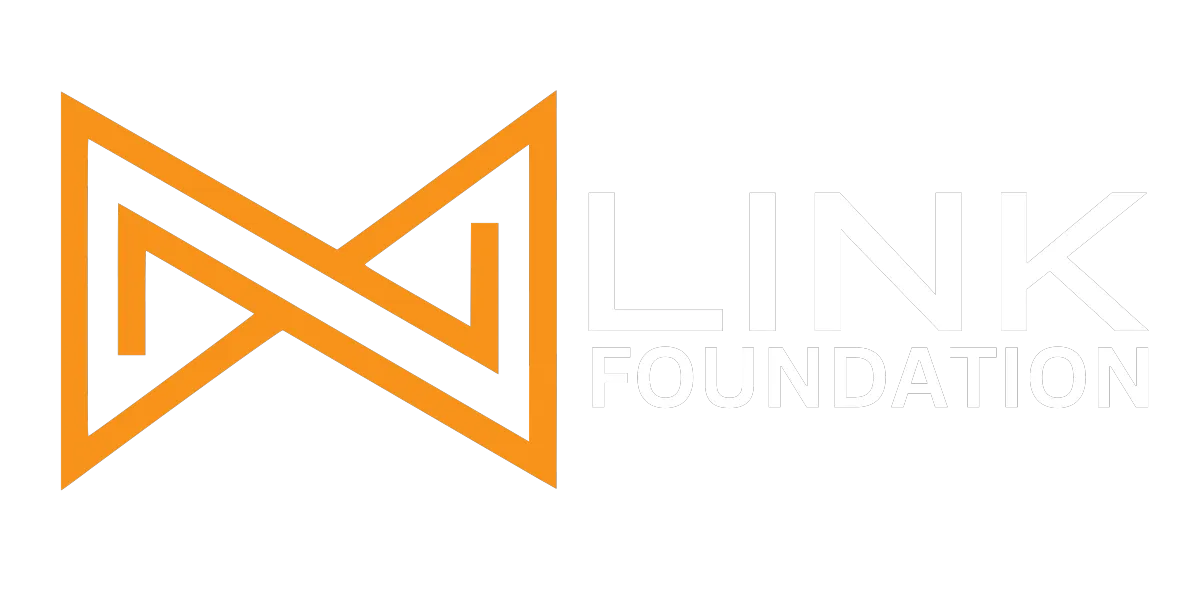
🧠 Critical Thinking: A Superpower for the Next Generation
🎧Listen to this article:
English
Spanish
⏱️ Estimated reading time: 5 - 7 minutes
In an era of constant digital stimulation, learning to think critically is no longer optional, it’s survival. This article explores how critical thinking shapes mental health, emotional balance, and freedom in the age of information overload.
⚡ Navigating the Age of Cortisol: A Survival Story of Reflection
Santiago woke up before dawn. He opened his phone and scrolled endlessly until a haunting image appeared: children lying lifeless after a bombing. His stomach tightened, his muscles contracted. Inside his body, an ancient alarm switched on: adrenaline spiked, cortisol surged, his mind stretched like a bow ready to snap.
In the minutes that followed, there was no pause. He jumped into social media, read headlines, and shared unfiltered outrage. The energy of anger drained him. His entire day became programmed for stress. His body behaved as if fleeing from an invisible predator appearing and disappearing without warning.
By nightfall, his muscles ached, his mind felt heavy. Then he realized he had not only seen horror, he had invited it. He had spent his energy reacting, not discerning. In that endless loop, he had lost something essential: his freedom. 🕊️
🎓 Why Critical Thinking Belongs in Every School

Like Santiago’s story, every day thousands of young people face shocking images, headlines, and comments that shake them emotionally. Without tools to pause or verify, many become trapped in a cycle of reaction that exhausts both mind and body. Critical thinking is the key that could free Santiago -and an entire generation- from this automatic behavior.🔑
When taught early in high school, critical thinking empowers students to observe before judging, verify before sharing, and understand before reacting. According to Nichols College, this skill allows individuals to “analyze, evaluate, and interpret information in a rational way.” (Nichols College Blog)
Furthermore, a 2024 eCampus News report shows that strengthening critical thinking skills gives students the tools they need to evaluate what they see online and filter misinformation. (eCampus News)
If Santiago had learned to pause, recognize the emotional impact on his energy, and evaluate the credibility of what he saw, his day would have been different. He would have protected not only his well-being but also his inner freedom. ✨
💭 Thinking vs. Scrolling
Every day, a student faces dozens of posts, videos, and messages. Some inspire; others manipulate. A post can trigger emotion and then provoke an uncritical reaction, that is reacting. Thinking, on the other hand, means creating inner space to ask:
🧐 Who created this message, and for what purpose?
📚 What is the source?
❤️ How does this affect my emotions, my decisions, and my relationships?
That moment of pause turns an information flood into an act of awareness. 🌊
🔋 Energy, Emotion, and the Attention Economy

Every thought consumes energy. Every emotion defines the direction of that energy. Imagine: Santiago saw that image of war, and his body lived it. ⚔️ Cortisol and adrenaline surged, preparing him as if to flee from mortal danger. One study found that cortisol levels can rise up to nine times during acute stress (NCBI Study).
When fear or anger-driven content is accepted without reflection, attention is sold, thinking narrows, and freedom diminishes. Instead of investing energy in discernment, we spend it on reaction. Each headline, each post, each comment becomes a drain on our ability to think. 🌀
Teaching young people to manage their energy and attention is teaching them mental health. The economy of attention and energy is the invisible foundation of critical thinking: knowing where to place the mind, how to recognize emotion, and when to step away from the noise. 🧘♂️
🤖 Using AI Wisely
Artificial intelligence is now part of everyday life: chatbots, translators, algorithms. But using it without discernment can weaken judgment.
Human reasoning combined with AI, when applied consciously, achieves better results than replacing human thought with machine output.
🛠️ Practical Steps for Thoughtful AI Use
💡 Create your own idea first.
🪞 Use AI as a mirror to analyze your perspectives.
🔍 Evaluate: What does it add? Is it supported? Is it coherent?
When young people learn to dialogue with technology instead of delegating to it, they become architects of knowledge, not mere consumers.
🌱 Building a Generation That Questions with Respect
A classroom that encourages questioning creates conscious and engaged citizens. Critical thinking is the bridge between knowledge and empathy: it teaches how to disagree without destroying, how to analyze without arrogance, and how to communicate with both logic and heart. ❤️🧠
When this discipline becomes part of the school curriculum, we don’t just train smarter individuals, we build a wiser society. 🌍
🌟 Conclusion: From Information to Wisdom
Critical thinking transforms noise into knowledge and emotion into understanding. In an age ruled by algorithms and AI, this skill is the new literacy. 📚
When we learn to recognize how each thought and emotion affects our energy, we can direct that force toward creation, empathy, and clarity. As neurobiology shows, a thought wrapped in fear or anger drains us; one filled with hope revitalizes us. 💫 Critical thinking gives us the mechanism to recognize that difference, to stop investing energy in what weakens us and redirect it toward what strengthens us. ⚖️
If we teach young people to think deeply, question respectfully, and decide with integrity, they will not only adapt to the future, they will shape it. 🚀
🔗 Verified Sources
Butler, H. A. (2024). Predicting Everyday Critical Thinking: A Review of Critical Thinking Assessments. Journal of Intelligence, 12(2), 16. Read on PMC.
Monash University. What is Critical Thinking? Read on Monash.edu.
Nichols College. Critical Thinking & Why It’s So Important. 2023. Read on Nichols.edu.
Effect of Increase in Cortisol Level Due to Stress in Healthy Young Adults. Read on PMC.
eCampus News. Why You Should Teach Your Students Critical Thinking. 2024. Read on eCampusNews.com.
🧭Ready to go deeper?
Explore how identity and consciousness evolve in the age of AI in this article: Human Identity vs. Machines: Redefining the Self in a World with Non-Human Intelligences





